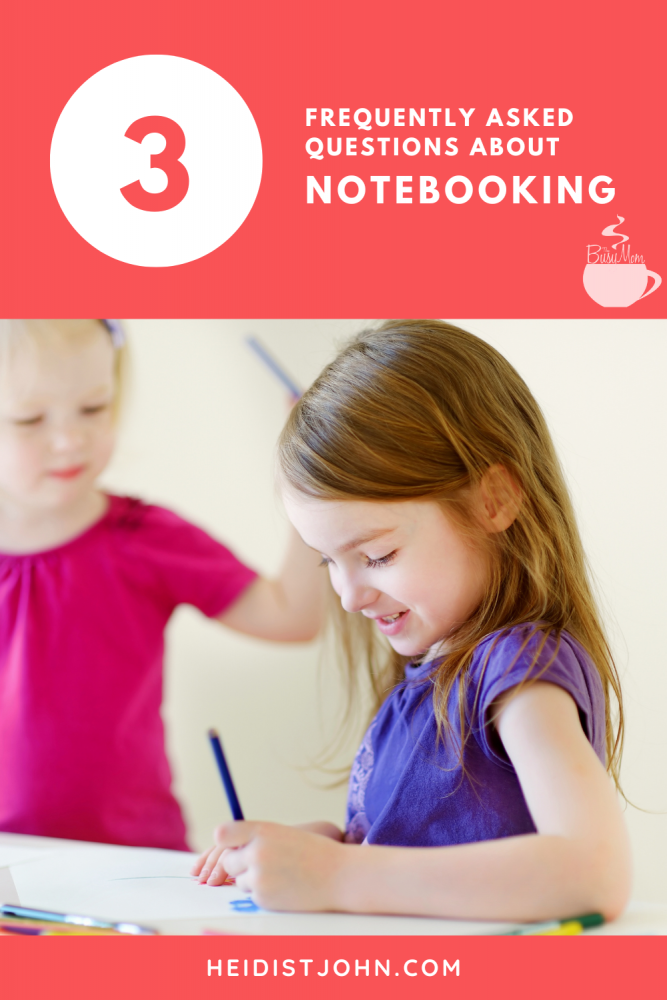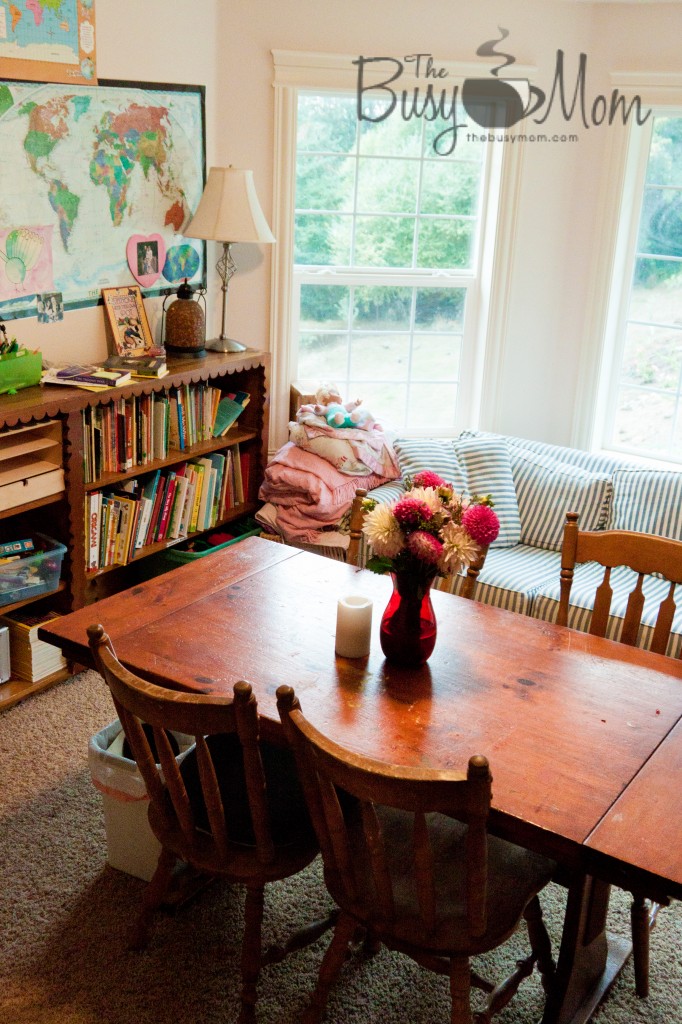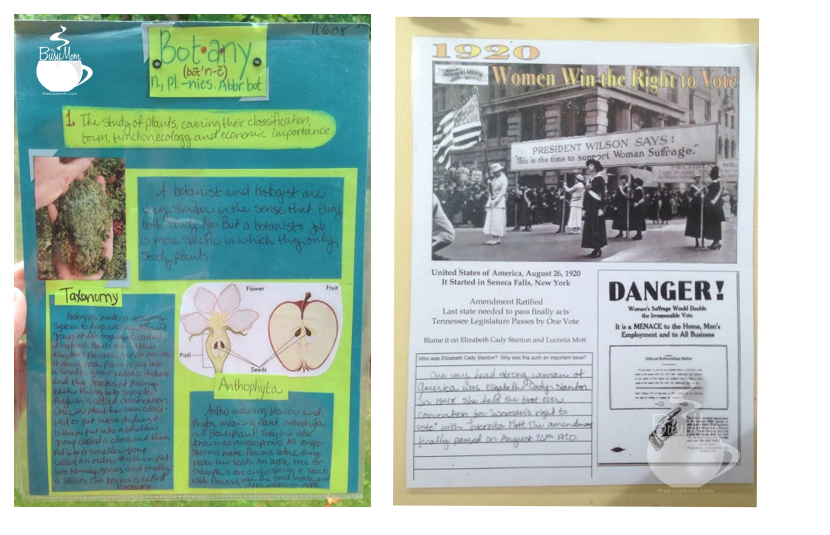Stefanie Garber, Elementary Principal & District Superintendent, has an excellent response to the mandates coming down on districts.
Continue reading
America the Beautiful, You’re In Trouble

My heart is breaking for our Republic today. I know many of you are grieving with me.
2020 will go down in history, at least for me, as the year we lost our Republic. The 24/7 attacks against our President by the mainstream media and leftist elites seems to have had its intended result: the faith in our democracy has all but disappeared for over 75 million Americans who watched as the unimaginable happened in slow motion
right before our eyes.
President Trump, though he is flawed like the rest of us and even arrogant at times, was a champion for this country, for Israel, and for the unborn, to name just a few of the reasons I loved and supported his presidency. His patriotism moved a generation out of their slumber and back into caring about what happens in DC.

5 Essentials To Getting Started in Homeschooling: Get Organized
Most of you know that I am an accidental homeschooler. It’s true. So when I got into this wild, crazy homeschooling adventure, I honestly had no idea what I was doing. No. Idea. I knew I could do it, I’d seen it done. I just didn’t know what it meant for me.

3 Frequently Asked Questions About Notebooking
When I started homeschooling in 1998, I did the only thing I knew how to do: I set up a “real” classroom in our and ordered a million dollars worth of workbooks. (At least it felt that way.) And we did okay … for a while.
We were about six months into it when I began to notice that the “life” I had longed for was just not happening with the workbooks. For the kids, it was just “business as usual,” as we went about our school day; there was no chance for creativity outside of the prescribed worksheet. They seemed bored and disinterested. Another thing that frustrated me was that each one of my children was studying something different; the first grader and third and fifth-grader were all doing a different era of history. Different sciences. Even different Bible lessons.
I was frustrated. I was hoping for more “togetherness” in our studies and less fragmented days. I didn’t miss the craziness of taking my daughter to school every day. I was hoping for more of a “one-room schoolhouse” approach in our homeschool, and having so many different workbooks and textbooks was not answering my heart’s cry to simplify our learning together. So, I began to search.
It was 2005 when I discovered something called lapbooking. (I love lapbooking so much that I wrote an eBook on the subject.) Shortly after that, I learned about notebooking. These two things literally changed the way we homeschool.
If you’re looking for a way to simplify your homeschool, keep reading. Notebooking might be just the answer you need.
What is Notebooking?
This is by far the most frequently asked question I get when it comes to notebooking, so I’ll make this as simple as possible. 🙂
Notebooking is simply teaching your child to write about and illustrate what they are learning in school. Notebook pages are stored using a 3-ring binder and sheet protectors. You can use pre-made notebooking pages or, you can use my favorite method—which is to let the child design it. Original is always better than not, right? 🙂
Over the years, we have done a mixture of these kinds of notebooking. I also keep a few pages here and there of traditional “workbook” pages in their notebooks. It serves as a reminder and *proof* that we’ve actually accomplished something that year. Occasionally I will open the notebooks to remind myself.
A few other FAQ’s about this:
What do you use? I use 2″ or 3″ binders. They can be found on sale all the time over at Amazon and of course, you can find them at your local Walmart.
When do you notebook? We do it one day a week. I keep a running list of the things we are studying on a whiteboard in our kitchen. We take one day each week to create notebook pages. It’s not something we do every day. (Do you feel relieved yet?)
How do I start Notebooking?
Every family who notebooks does it a little differently. At our house, we notebook just one day each week. Usually, we do it at the end of the school week. I’ll try to break it down for you a little by putting it into steps.
- Keep a running list of the things you’re studying. We write them on a whiteboard. For example, last year during a week in October, we studied:
- the parts of a flower
- Joseph is sold into slavery (Firmly Planted, Book 2)
- Times Tables the Fun Way
- The Civil War
- I let my children choose things off the list to write about based on their age. For example, the 3rd grader chooses two things that really made her eyes light up. She will make two notebook pages about those two things. The older they are, the more pages they can create. Four is about the limit for “original” pages, so if you have a high schooler, you might ask them to create a page about each of the four things I listed above.
- We make a mess. Messes are good when they’re signs of a creative, engaged child! Get out the cardstock, glue, scissors, sheet protectors, colored pencils and crayons. Let your children be creative.
- Create a page! Sometimes, I use notebooking templates that I find on the internet, or I create my own on our home computer. My favorite way by far to create pages is to simply let the children make their own. You’ll need to show them examples, and if they are young, you’ll need to help them draw lines, etc., but after that, let them spread their creative wings and fly!
- When notebook pages are done, put them in sheet protectors and put them in your binders. Don’t forget to put a DATE on each page! I like to keep our binders in chronological order. It really helps with reference points at the end of the year.
- Add other pages you are doing in school; the occasional math page or language lesson. All of these will serve to help you create a wonderful portfolio of your child’s work. They’ll love looking back over it.
Favorite Resources For Notebooking
These are a few of my favorite things:
- Lapbooking Made Simple – my new eBook about Lapbooking. (great to use in tandem with notebooking)
- Five in a Row’s Notebook Builder (Notebooking Templates)
- Sheet protectors
- Glue sticks
- Decorative Scissors
- Avery binders (3″ and 2″)
- Colored Pencils
- Fine-tipped Sharpie markers
- Stickers (used to decorate pages)
- Pens & Pencils (duh, but I had to throw it in here.)
Bottom line: Notebooking can help you be more creative with your children, learn more and enjoy it more. Give it a try!
Shop Heidi’s Amazon Store for Homeschool resources, recommendations, and more!


Giving Our Kids the Gift of Boredom!
I can hear them now as my hubby and I wash up after dinner. They are running around, enjoying the respite from our intense desert sun while they soak up that important time outside. One boy runs inside to inform me that he’s discovered a new path. Really it is just a long stretch of space behind a line of bushes. But in his mind, it is ripe with mystery and opportunity. He grabs at my hand, begging me to explore this path with him. I arrive in time for a lizard funeral as boys relay their attempt to rescue this scaly creature from a bird. In the span of 2 minutes, we’ve discussed funeral practices, heaven, predator/prey relationships, and compassion. And I didn’t have to plan a thing.

Ahhh, the lazy days of summer – when kids run wild – exploring, building forts, climbing trees, forming clubs, reading books. Well, that’s the way it used to be anyways.
These days we are all about programs and bucket lists…
And if we aren’t keeping our kids busy and occupied with these than we give them our ipads, smartphones or some other kind of screen to keep them occupied.
But what if we did something drastic and returned to the good ol’ days, the lazy days of summer? What if we embraced the value of time – time to be bored – knowing that we are allowing their imagination, their curiosity, their ingenuity to develop?
They say that “necessity is the mother of invention,” but I’d venture to add that a bit of boredom accomplishes this too! It takes skill to know what to do with oneself. If we remove distractions and take the time to provide these opportunities, think of what a gift we can give them. And while we are at it, we can unplug and just be as well. We can be present – enter into their worlds, bring them into ours. We can read, talk, bake, and explore free from the confines of “busyness.” Our culture has idolized the concept of being busy and redefined what that looks like. It is program focused, instead of people focused. And all too often it leaves us frantic, disconnected, and unable to just be there for the little things in life. Life is busy, but let’s take a look at what we are busy doing and then help our children learn how to constructively occupy their own time without always doing it for them. Because these are the moments when most of life’s lessons are learned. It’s nearly impossible to plan for; we simply need to be available.
So how do we embrace this kind of “time?” I’m sharing a few ideas about how to embrace boredom in a way that cultivates creativity over at my blog, Cultivated Lives.
Heather.

Shop Heidi’s Amazon Store for Homeschool resources, recommendations, and more!

When Your Best Laid Plans Fail
When it comes to making plans, I am second to . . . well, just One. Planning is in my DNA. I am a list maker and a lover of all things calendar-related. Just give me an idea and a deadline, and I’ll make it happen—that is, if only the universe would cooperate! I shudder to think of the thousands of my perfectly laid plans that have been completely derailed by everything from forgetting to plug in the slow cooker to getting in a fender bender on the way to the store.
The truth is, we can’t plan for everything. And perhaps more to the point, no one ever plans for a crisis. We don’t pencil-in “crisis” on the third Monday of the month. And yet, without fail, with the bases loaded and two minutes left, the phone rings, and voilà—you have a sick kid, someone has lost their job, a friend has devastating news.
This is where courage needs to step up to the plate.
The Bible says that we can make our plans, but ultimately the Lord determines our steps (see Proverbs 16:9). And some of those steps can be pretty painful to take. In my twenty-six years of mothering, I have lost a baby to miscarriage and wept beside the casket of a dear friend’s stillborn daughter. We don’t always get to choose what happens to the babies we carry so carefully inside us. We can’t always predict what a day will bring. But we are guaranteed of this: God will never leave us or forsake us. Ever.
And oh, how we need Him! God is the one who brings courage from the chaos and peace to the broken places in our hearts. Without the courage that comes from God, the spirit of fear can settle into the unseen places of a mother’s soul. So stay close to Him, precious mom! Get to know His Word. Memorize His promises. Don’t let that fear take root.
Every mom can identify with fear, but every mom can also identify with the antidote to fear we’ve been given. From the moment we know we’re bringing a new life into the world, something miraculous—even sacred—awakens in the heart of a mother: courage.
It takes courage to be a mother. Unplanned C-sections, unexpected diagnoses, illnesses, sibling rivalry, bad attitudes, and strong-willed children test the courage and resolve of every mother. But God uses all of these circumstances to help make us into the mothers He wants us to be.
I know it’s true, because this business of shaping little hearts is also shaping mine. Motherhood has exposed weaknesses in me I never knew I had, it has driven me to the limits of what I thought I could do, and it has filled my heart with hopes and dreams I never imagined for a future I can only entrust to God. There’s no doubt about it: becoming a mother changes everything. And even twenty-six years in, I’m finding I need fresh courage on a daily basis.
Let’s face it: this isn’t our grandparents’ generation. Choosing a Christ-centered life in a culture that rejects Christ is challenging the courage of many believers today. We are parenting in a generation in which fear is a driving force in our decisions. Standing for what the Bible says about marriage and human sexuality is growing increasingly unpopular as our culture moves away from the truth and toward moral relativism. As a result, Christian mothers today have to do something the previous three generations haven’t had to worry about: we’re preparing our kids to face rejection.
It takes courage to stand for the Lord in the face of rejection, but stand we must. The next time your children tell you they have been mocked or labeled for their faith or beliefs, remember that at the moment of our salvation, God Himself gave us an even more powerful label. We wear the label redeemed, and no one can relabel us! We are forever accepted by God.
If you’re struggling to find courage in the face of being rejected, look up—and point your children’s gaze to Jesus as you do. Courage is found where acceptance abounds: in Christ. MomStrong moms know who they are in Christ, and they refuse to allow the devil to lie to them. They rise to the challenge of the culture and, in the process, shape the hearts and minds of their children for the glory of God.
Yes, we are living in challenging times, but like Joshua, we have been called to “be strong and courageous.” This is an exciting time to be a Christian, because when faith finds its feet in this generation of parents and their children, we are going to see amazing things happen in the lives of God’s people.
Adapted from Becoming MomStrong: How to Fight with All That’s in You for Your Family and Your Faith by Heidi St. John.

A Few Tips to Homeschooling a Wide Age Range
One of the biggest challenges I find with homeschooling is scheduling it all in. Even if we don’t have a super set and outlined schedule, it’s still one of the biggest stressors when it comes to the homeschool year. I want to make sure I fit in everything, but I also want to make sure I’m not overwhelming anyone. I tend to let my kids lead in that realm of things, as far as how much they can do. I set the guide because we do need to cover certain things each year, but beyond that – it’s up to their ability and desire.
We usually end up doing much more than I had planned because my kids are eager learners and love to read. Often times at the beginning of the year I’m shocked at how much we have planned for the year. I believe that our relaxed approach to our schedule is a huge contributing factor to them having such a love of learning.
The next challenge is the wide age range of my children. My eldest is in 8th grade, then the next of my kiddos is in 1st, followed by my little one who is 3. I guess the three-year-old would be considered preschool or toddler school level.
As you can see, we have a pretty big age range. You might have more kids which might mean you have several kids in multiple different grades, more than I do.

So, how do we face head on homeschooling a wide age/grade range?
First things first
See if there is anything you can teach all of the kids together. For instance, if your 8th grader is studying American History, why not have your younger children study American history too? They don’t have to do it at the same intensity or depth as the older one, but they can still do it. Many curriculum options out there offer this flexibility to tailor their curriculum for older and younger students to use at the same time. But if they don’t have that option, you can easily relay the information to your younger one in a manner that they understand.
Next, keep your schedule super simple.
For us, this is essential. And as more of my kids are heading into school age, it’s been a huge life saver for us.
I have a rather untraditional schedule with my kids. It works for us and it helps me teach each of them according to their needs without feeling like I’m overwhelmed, overwhelming them, or missing anything.
My approach: I don’t teach every subject every day! That’s right. We have designated days for our more meaty subjects. This allows us to focus on one topic at a time and allows me to spread myself amongst my kiddos to give them the best attention I can.
So, how does this look you’re wondering?
Let’s say we do Math on Monday, History on Tuesday, Science on Wednesday, Language Arts on Thursday, and Foreign Language on Friday. That’s just a sample of what it could look like. Many wonder – but what about constant practice? What if they forget skills from one week to another until that subject day arrives?
Here’s how we prevent that:
Using the example above, Math would be taught on Monday. We would work through the lessons and then practice with our worksheets. I would work with the older student first and work my way down through the younger ones.
Then Tuesday comes along and we’re on to History, but before we start History we do another Math worksheet. Our math program offers 5 worksheets for each lesson so it happens to work well with our schedule. If that weren’t the case, I would simply create or find worksheets based on Monday’s lesson.
This way, they are refreshing and practicing their newly learned concepts all week, but just with a simple worksheet which takes maybe 5 or 10 minutes. They’ve taken the core of the lesson on Monday – leaving the rest of the week for practice.
Back to Tuesday, when we’re on History. After we do our Math worksheet we do our History lesson and discuss it. We do some map work and really dive in to any discussion questions that we may have. But we don’t just forget about it until next week. On Thursday we would have a brief discussion with my youngest about what we learned on Tuesday and I’ll have my big kiddo write down a paragraph or two. Catering to their capabilities.
This keeps things fresh in their heads, allows for time for it to really soak in for a day or so, and allows for me to see how much they have retained. It’s a super chill approach to learning that we have grown to love.
If this schedule just does not appeal to you, I have another suggestion. We’ve tried this method before and although we liked it, we went back to our one-subject-a-day method.
Work with your older kids first. They are more likely to have work that they do more independently than your younger ones, but may need you to either teach the lesson or at least assign them the lesson for the day should they be working on it independently. When my eldest hit 6th or 7th grade, she did a lot of her work independently and I would just grade her work and discuss it with her after.
Once you’ve finished with your hands-on lesson teaching with your older kiddos, move on to your younger ones. You’ll have the peace of mind that your older kiddos are working on their school work, which allows you time and focus to teach the younger ones.
Encourage independence as soon as they show readiness.
As I mentioned above, my eldest started doing a lot of her work indecently once she hit 6th grade, for sure by 7th grade. How did I know she was ready? It just got to a point where I realized she was ready to take a stronger hold of the reigns and work at her pace. She works much faster this way too. I think my schedule was holding her back a bit.
Total side note: This is something I just adore about homeschooling, my kids can begin to work at a pace that suits their learning needs and style so much sooner than they could in what’s referred to as a traditional school setting. But with homeschooling booming, I think traditional is changing.
Takeaways
Don’t try and teach each of them different subjects at the same time. If your kids are working on two different subjects at the same time, it should be independently. Stretching yourself into different subject directions AND grade directions will cause you to burn out.
Plan your schedule realistically. Don’t try and do every single thing every single day with each kid. It’s just not realistic. I like to think of it this way: in college, do you do every subject every day? Nope! So there is no harm in not doing every subject every day now either.
Work with the older kids first, then work with the younger ones. While you’re working with the older ones have the younger ones work on something like handwriting or maybe give something for them to color. I have a few connect the dots booklets for my younger kiddo. This keeps her busy while I teach her big sister, and helps her practice her numbers!
And finally, encourage your kids to begin working independently as soon as they show readiness. This is beneficial to them and their development. Taking ownership of their work is exciting and encouraging for them!
xoxo, Marlene
A Diligent Heart
Shop Heidi’s Amazon Store for Homeschool resources, recommendations, and more!





